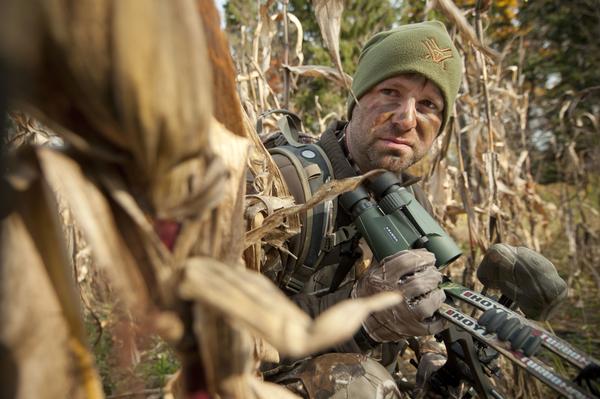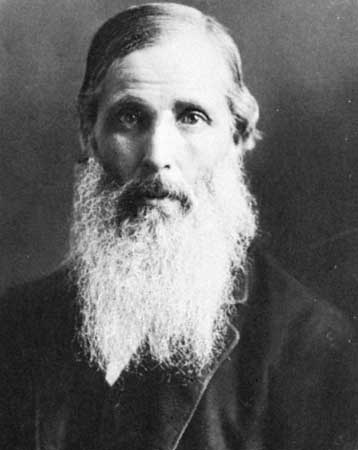Strategies for Taking
Whitetails During
Prime Time
Gerald Bethge, Editor
(Lyons Press)
There is a raw humor about how animals --- even two-legged animals --- get stupid and stupider when they are in lust. It has been part of literature since the time of Aristophanes, and was brought to high art by Shakespeare, de Maupassant, Byron and Chaucer.One of the earliest experiences I had with classic literature --- and what may have shadowed my long and awful career as a failing English major --- was an early attempt to translate the rough and tumble of the Miller's Tale from Middle English into the language of the streets of my hometown.
Of all classic stories, this one is an excellent example of what the rut (also called "the itch") can do to an otherwise sane man (or animal). However, in 1950, the Willow Branch branch of the Jacksonville Public Library would barely be giving access to the original to a full-fledged adult, much less a kid ravished by acne, self-doubt, and much in the way of nervous agitation for his dubious daily exercises under the sheets.
Still, I was not about to give up the cause of great, bawdy verse to the suspicions of a steely-eyed librarian with a pencil stuck through her bun.
I can never ever forget the triumph when I finally got the original Middle English version out of the stacks, and --- after weeks of study and sweat --- was able to render it, on my own, my first albeit second-hand poetic triumph . . . gleaned from that crude, eccentric language known as Middle English. (For those of you who wish to know more, go to this sample.)
It is apparent from Advanced Rut Hunting that those who are into slaughtering Cervidæ know that they can usually get in a shot or two at a lusty twelve-pointer when he is in the midst of courting his lady love, what the editor here refers to as "prime time." "Anything can happen during the rut," says the author, culling a hoary cliché, "and it usually does."
The book makes no bones about the advantage of stalking a buck when his heart is fancy-free, when one can catch him, in a manner of speaking, with his pants down. The fifteen authors represented here rise at the ungodly hour of three A.M. or so, go out into the snow-powdered fields, and lie in a blind with shotgun and a thermos-full of firewater just to catch two deer busy doing the beast with two backs.
There is a great deal of back-and-forth here about "scrapes," "decoys," and "trickle rubs." Bucks rattle and grunt, huntsmen, in response, issue "fawn-bleating calls," "estrus-bleats," "fawn-distress estrus whines," and my favorite, "hot doe bleats" (not to be confused, we would ssume, with hot-dog buns or, even better, hot cross buns).
Those who want their venison steaming, bloody must scout out antler rubs, second ruts, trickle ruts, and in the process, listen for "buck clicking." Bucks in love, apparently, come to be just as noisy as Chaucer's long-suff'ring, poker-ridden Absolon.
We'd be the last to claim, after plowing for too much time though Advanced Rut Hunting, that the technology of deer-love is simple. For instance, there are a dozen different techniques for making use of scrapes --- markings left on the terrain as signals for does and other bucks. However, if it all stumps you, you can always purchase a spray yclept "Love Potion No. Nine." It bills itself as "A Fatal Attraction of Pheromones"
Those of our readers who plan to be seeding the woods with love potions and hot doe bleats should be reminded of Ed Zern's fair and historic warning. One should be careful when using attractants, he tells us, for it is possible that the buck may get so het up that he will respond by trying to mount not only a doe, but the hunter . . . much to the distress of both.
There are about forty photographs offered up here. Twenty are of a sportsman holding up the head of a defunct buck. They pull up on the rack so that the beast can, presumably, smile at the camera. The rub comes --- not necessarily an "antler rub" --- from the fact that so many of us grew up feasting on early Walt Disney. We now have a thing about deer. We know that a big father deer will have a kindly mama deer who, in turn, will whelp a tiny Bambi of the big eyes. Remember when they shot Bambi's ma in a gush of woe and blood? That alone should get the animal-rights activists busy picketing any and all of the authors represented here.
--- L. W. Milam

